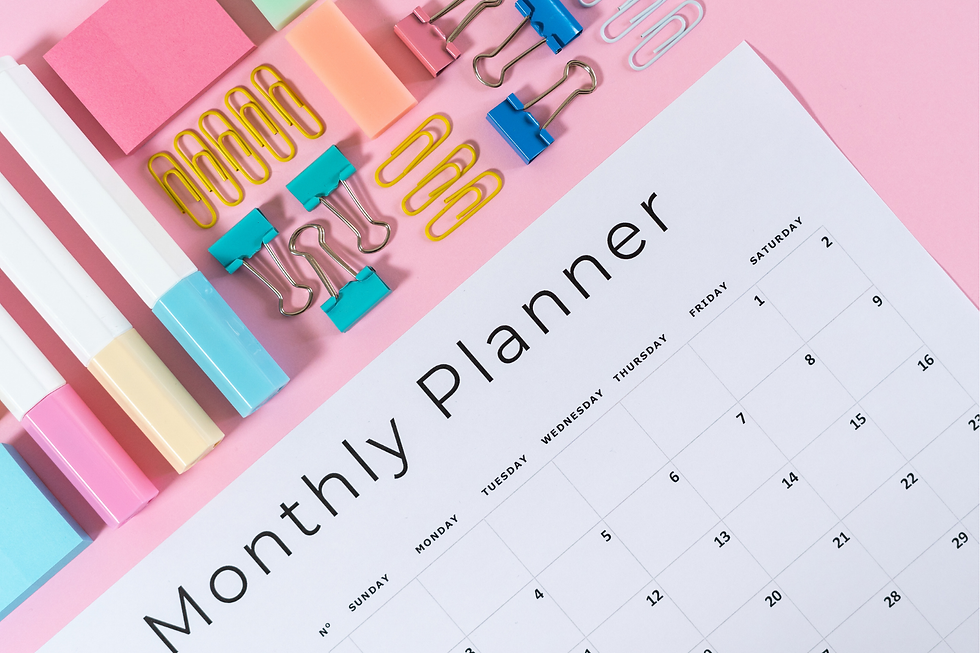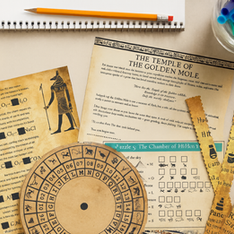Still Using a Generic Planner? Here’s What You’re Missing as a Science Teacher
- Androy Bruney

- Jul 10
- 3 min read

That Time I Forgot the Microscopes...
I’ll never forget the lab that nearly didn’t happen.
I had prepped the slides, printed the procedures, and even baked brownies for my second-period class (don’t ask—it was a weird morale thing). But when the bell rang and my students were lining up at the supply bench, I realized one thing was missing: microscopes.
All of them.
The cupboard was completely empty, because I had sent them for servicing and forgot to track the return.
That’s the day I finally admitted that my beautiful floral planner wasn’t cutting it.
Sure, it had quotes and stickers and enough to-do lists to fill a textbook… but it wasn’t built for the kind of teaching I do.
Why Generic Planners Fall Flat for Science Teachers
Most planners are made with the general education teacher in mind: One subject. One classroom. No flames, no goggles, no broken thermometers.
But when you’re teaching chemistry, biology, earth science, or physics, things get… complicated.
You’re juggling lab days and regular lessons
You need to track student safety contracts
You’re prepping equipment and materials in advance
You’re managing group roles and cleanup responsibilities
A generic planner doesn’t give you room for that. So we flip between notebooks. Sticky notes. A half-finished spreadsheet on Google Drive.
Sound familiar?
Your Job is Lab-Based, So Your Planner Should Be Too
Planning a week of labs is nothing like prepping a week of lectures.
You need to:
Know what materials you need before the day of
Schedule time for lab setup and cleanup
Assign and rotate student group roles
Keep track of what worked, what didn’t, and what you’ll tweak next year
A subject-specific planner isn’t a luxury. It’s a system.
One that actually understands the science teacher’s workflow—and builds it into the pages.
Track Labs, Equipment, and Groups Without the Chaos
With the right planner, you can walk into your classroom on a Monday morning and already know:
Which lab is scheduled
What materials do you need to prep
Which groups are working together
Who’s on safety duty, who’s handling cleanup, and who’s running the stopwatch
No more flipping back and forth between lesson plans, supply lists, and scribbled sticky notes.
It’s all in one place—just the way it should be.
Safety Shouldn’t Be an Afterthought
Lab safety is non-negotiable. Period.
But if your planner doesn’t help you stay on top of contracts, equipment maintenance, or incident logs, then it’s easy to fall behind, and it's easy for accidents to happen.
That’s why I knew my planner had to include:
A lab safety contract tracker
A maintenance & repair log
A lab incident report form so I can keep track of any mishaps in the lab in case I need to report these to admin.
Equipment checkout logs for goggles, thermometers, probes, and more, so that I know where everything is at all times.
Remember, we’re not just teaching—we’re running mini science departments out of our classrooms.
You Deserve a Planner That Thinks Like a Science Teacher
I created the Ultimate Science Teacher Planner because I couldn’t find a planner that worked for the job I was actually doing.
It’s editable, printable, and designed by a science teacher who gets what it’s like to teach labs on a tight schedule with multiple preps and 30 students who all want to light the Bunsen burner at once.
And more than anything, it’s made to reduce your mental load.
Because when the systems run smoothly, you get to focus on what matters: teaching science in a way that sticks.
Ready to See the Difference?
You can grab the Ultimate Science Teacher Planner here on TPT.
And if you're still not sure? Start with your next lab day. Ask yourself:
“Did my planner actually help me pull that off?”
If the answer is no… it might be time for one that does.















Comments